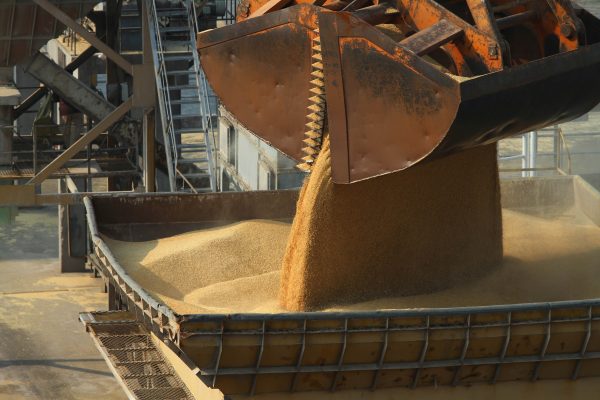China took action right after Ambassador to Canberra Cheng Jingye flagged the possibility of a Chinese consumer boycott of Australian goods and services. Subsequently, on 18 May, China’s Ministry of Commerce made a decision to impose a 73.6 per cent anti-dumping tariff and a 6.9 per cent anti-subsidy tariff — a total of 80.5 per cent — on Australian barley exports to China.
Notably, the anti-dumping duty is a substantial increase from the rate of 56.14 per cent originally requested by the Chinese barley industry in 2018. The imposition of the barley tariff was accompanied by an import ban on Australian beef from four abattoirs. These prohibitive measures could cause large economic losses for Australian farmers and encourage Chinese importers to switch to other sources of supply.
Calling ongoing China–Australia tensions a trade war is an overstatement. A trade war, like the one between the United States and China over the past two years, involves tit-for-tat trade measures by both sides. Australia has never responded to China’s economic sanctions through trade measures and has made it clear that it will not do so this time. Instead, Australia is trying to resolve these issues through diplomatic channels.
The ongoing deterioration of China–Australia relations is the result of Australia’s reactions in a series of politically sensitive areas. This is not the first time that China has used trade sanctions to resolve political disputes or retaliate against trade measures. While both governments deny any connection between the trade measures and the COVID-19 investigation, the actions have provoked accusations from Australia of Chinese economic coercion.
As an emerging superpower, China is criticised for falling into the classic behavioural patterns of an economic hegemon, like the United States. Yet China has been more moderate in exercising economic power and is herself vulnerable to US economic coercion. As amply demonstrated in the US–China trade war, US economic sanctions were persistent and escalated until the intended outcomes were achieved. In comparison, China was merely responding to a wave of US tariff escalations and eventually had to yield to US pressure in signing a largely non-reciprocal trade deal.
In the context of the Australia–China relationship, China has been very cautious about its use of economic power and retaliatory measures. For example, China has not retaliated against anti-dumping measures taken against China by Australia until the barley investigation. This is in spite of the fact that Australia has continued to treat China as a non-market economy after granting China full market-economy status in 2005. Australia has imposed anti-dumping duties on a range of Chinese exports over the past decade. When political disagreements arose, China’s coercion was generally short-term, designed to send a message rather than inflict actual economic harm. Amid the ongoing tensions, China has continued this practice by stressing that further escalations would be neither desirable nor necessary.
While restrictive trade measures are economically detrimental to both nations, Australia may suffer more. The prohibitive tariff on barley would effectively exclude Australian barley from the Chinese market, which accounted for over 70 per cent of Australia’s barley exports between 2015 and 2018. The beef ban is set to affect over AU$1 billion (US$660 million) of Australia’s beef exports, with rising fears that other agricultural sectors such as dairy and wine might also be targeted. In the face of a record high unemployment rate of 6.2 per cent, Australia cannot afford an escalation of trade tensions with China.
In contrast, Chinese barley and beef importers have reportedly begun to turn to other major suppliers to meet their demand. In particular, the trade tensions with Australia seem to have created room for China to fulfil its massive purchase commitments under the US–China phase one trade deal.
Among other things, China committed to increase purchases of US agricultural goods by an additional US$12.5 billion in 2020 and a further US$19.5 billion in 2021. Barley, beef, dairy products, wine, cotton and wool are all on China’s shopping list. China has already taken steps to facilitate imports of US barley. China may continue to switch imports away from Australia and towards the United States should trade tensions escalate. A reported potential ban on imports of Australian coal is the latest development, though initial claims are that China is looking to strengthen local coal production. Together with liquefied natural gas, crude oil and refined products, coal does fall within China’s commitment to increase purchases of energy products from the United States to a total of US$52.4 billion in two years, including an increase of US$18.5 billion in 2020 and an additional US$33.9 billion in 2021.
Given China’s good record of compliance with the rulings of the World Trade Organization (WTO), Australia may bring a WTO case to push China to change or remove restrictive measures. But WTO litigation takes time and does not guarantee a win. In the meantime, Australia should engage in diplomatic dialogue with China to start rebuilding the relationship. To strengthen bilateral economic ties in the long-run, both governments will need to take concrete steps to avoid unnecessary confrontations and reinvigorate the political will needed to further economic cooperation and liberalisation for mutual benefit.
What needs uncoupling is countries’ political and economic goals. For Australia, a strong economic partnership with China will continue to create large opportunities for its pursuit of production diversification, expansion of its agricultural and services sectors, and advancement of digitalisation and innovation, all of which are crucial to Australia’s economic growth and recovery in a post-COVID-19 world. Australia needs to have a healthier economic relationship with China — not to be a casualty in the crossfire between the two superpowers.
Weihuan Zhou is a Senior Lecturer and a member of the Herbert Smith Freehills CIBEL Centre at the Faculty of Law, The University of New South Wales, Sydney.
This article is part of an EAF special feature series on the novel coronavirus crisis and its impact.

